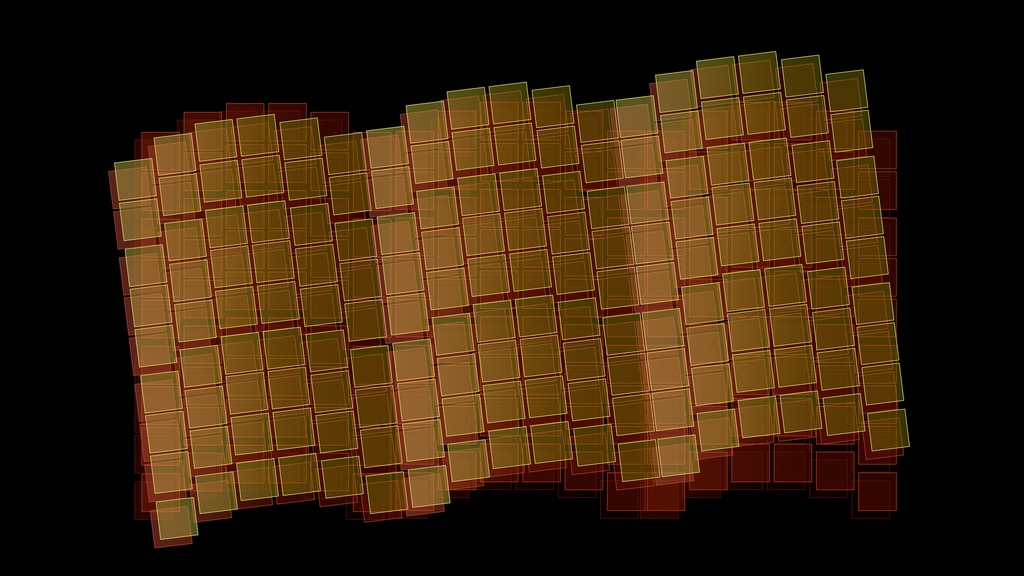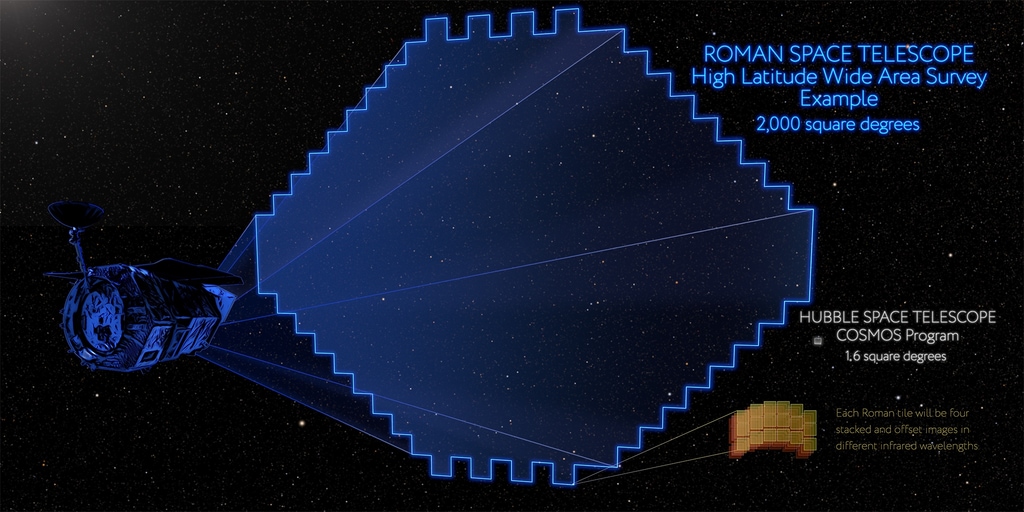Roman's Core Surveys Infographics

NASA’s Nancy Grace Roman Space Telescope’s three main observing programs, highlighted in this infographic, will enable astronomers to view the universe as never before, revealing billions of cosmic objects strewn across enormous swaths of space-time.
Credit: NASA’s Goddard Space Flight Center
NASA’s Nancy Grace Roman Space Telescope team is announcing the designs for the mission’s three core surveys. These observation programs will investigate some of the most profound mysteries in astrophysics while enabling expansive cosmic exploration that will revolutionize our understanding of the universe.
Roman’s crisp, panoramic view of space and fast survey speeds will allow astronomers to study the universe as never before. The Roman team asked the science community to detail the topics they’d like to study through each of Roman’s surveys and selected committees of scientists across many organizations to evaluate the range of possibilities and formulate three compelling options for each.
In April, the Roman team received the recommendations and has now determined the survey designs. These observations will account for no more than 75 percent of Roman’s surveys during its five-year primary mission, with the remainder allocated to additional observations that will be proposed and developed by the science community in later opportunities.

This infographic describes the High-Latitude Wide-Area Survey that will be conducted by NASA’s Nancy Grace Roman Space Telescope. This observation program will have three components, covering more than 5,000 square degrees (about 12 percent of the sky) altogether in just under a year and a half. The main part will cover about 2,500 square degrees, doing both spectroscopy (splitting light into individual colors to study patterns that reveal detailed information) and imaging in multiple filters (which allow astronomers to select specific wavelengths of light) to provide the rich dataset needed for precise studies of our universe. A wider component will span more than twice the area using a single filter, specifically covering a large area that can be viewed by ground-based telescopes located in both the northern and southern hemispheres. The final component will focus on a smaller region to provide a deeper view that will help astronomers study faint, distant galaxies.
Credit: NASA’s Goddard Space Flight Center

This infographic describes the High-Latitude Time-Domain Survey that will be conducted by NASA’s Nancy Grace Roman Space Telescope. The survey’s main component will cover over 18 square degrees — a region of sky as large as 90 full moons — and see supernovae that occurred up to about 8 billion years ago. Smaller areas within the survey will pierce even farther, potentially back to when the universe was around a billion years old. The survey will be split between the northern and southern hemispheres, located in regions of the sky that will be continuously visible to Roman. The bulk of the survey will consist of 30-hour observations every five days for two years in the middle of Roman’s five-year primary mission.
Credit: NASA’s Goddard Space Flight Center

This infographic describes the Galactic Bulge Time-Domain Survey that will be conducted by NASA’s Nancy Grace Roman Space Telescope. The smallest of Roman’s core surveys, this observation program will consist of repeat visits to six fields covering 1.7 square degrees total. One field will pierce the very center of the galaxy, and the others will be nearby — all in a region of the sky that will be visible to Roman for two 72-day stretches each spring and fall. The survey will mainly consist of six seasons (three early on, and three toward the end of Roman’s primary mission), during which Roman will view each field every 12 minutes. Roman will also view the six fields with less intensity at other times throughout the mission, allowing astronomers to detect microlensing events that can last for years, signaling the presence of isolated, stellar-mass black holes.
Credit: NASA’s Goddard Space Flight Center
For More Information
Credits
Please give credit for this item to:
NASA's Goddard Space Flight Center
-
Producer
- Scott Wiessinger (eMITS)
-
Science writer
- Ashley Balzer (ADNET Systems, Inc.)
-
Public affairs officer
- Claire Andreoli (NASA/GSFC)
-
Graphic designer
- Scott Wiessinger (eMITS)
-
Illustrators
- Joseph Olmsted (STScI)
- Joyce Kang (STScI)
Release date
This page was originally published on Thursday, April 24, 2025.
This page was last updated on Wednesday, April 23, 2025 at 9:19 PM EDT.


